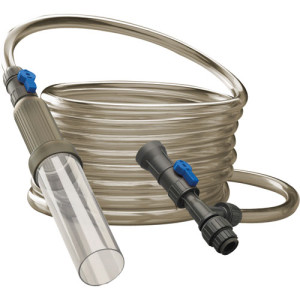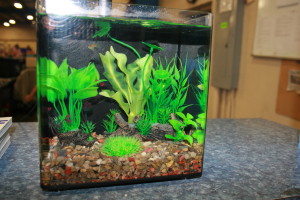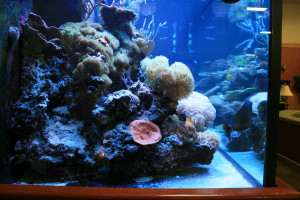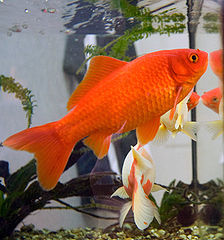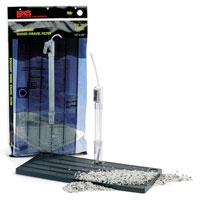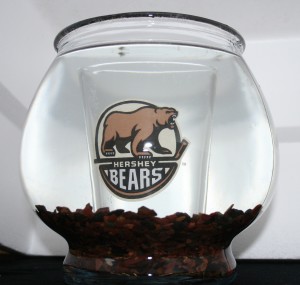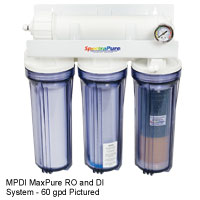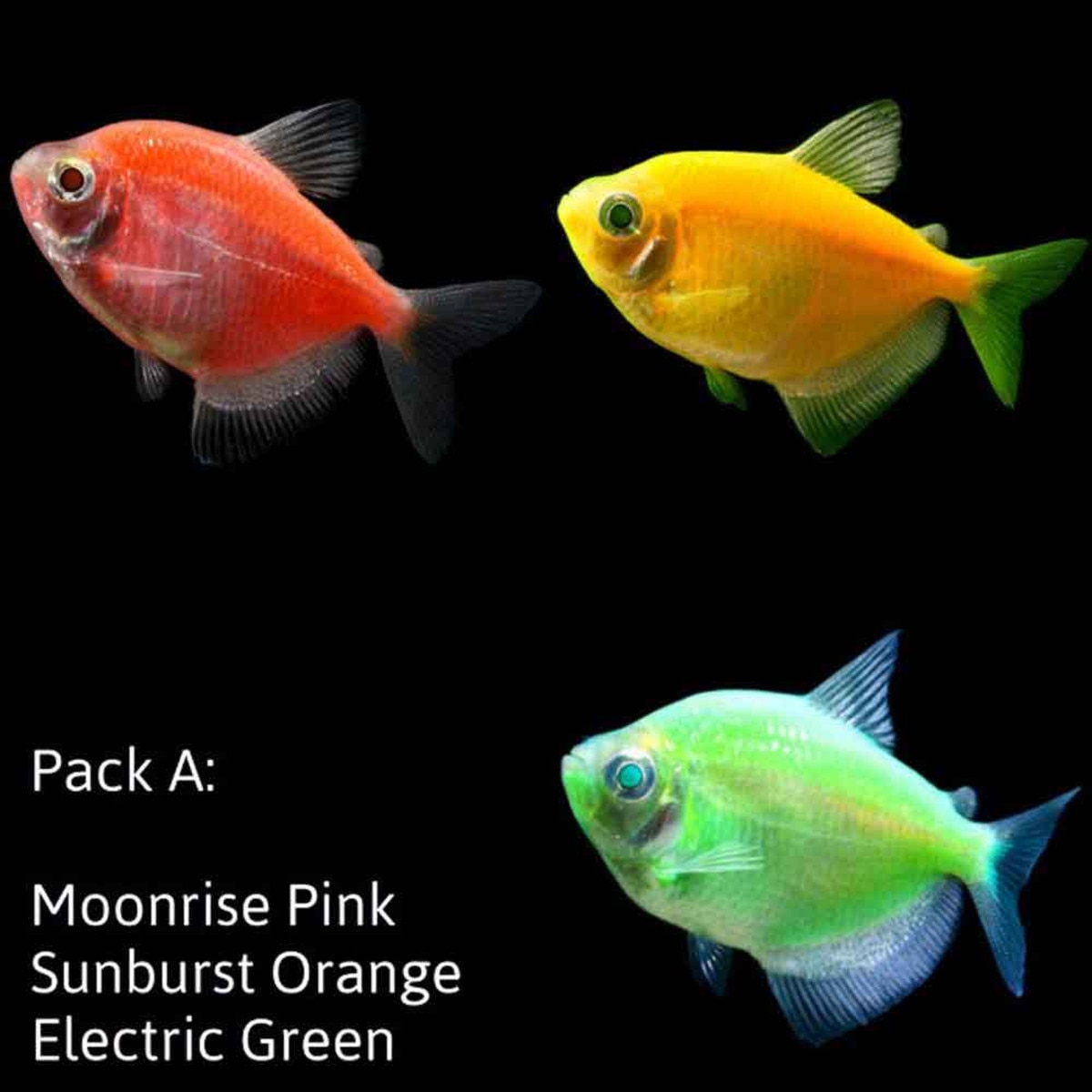One of the first purchases most aquarists will make for a new aquarium, be it freshwater, saltwater, reef, discus, goldfish, cichlid or any other – is the gravel and substrate. It could be sand, crushed coral, Fluorite, neon pink pebbles, glass marbles or countless other materials but it all tends to be the very first thing to go into an empty aquariums. But….why? Do you really need it? Are there alternatives? Much like the eternal home decorating debate of hardwood-versus-carpets, the battle brews among aquarists over what covers the bottom of their aquariums, a layer of substrate or nothing at all.
So why has substrate become such an integral part of the aquarium culture, and why are some aquarists now looking past it in favor of the bare glass or acrylic bottom of their aquariums? Much of it has to do with our understanding of the aquarium ecosystem now over what we knew years or even decades ago. Even as recently as five or ten years ago, undergravel filters were thought as indispensable for all types of aquariums and as such, gravel was thought vital to their function. We’ve come a long way with filtration technology since then, and we’ve also come a long way with understanding how the water chemistry in our aquariums functions. Alternatives and advancements have made the old undergravel systems nearly obsolete and the aquarium gravel that went on top of them is become more of an Option instead of a Requirement.
That said, how do you make the choice? Like so many other parts of our hobby, it comes down to personal preference and your goals. Bare-bottom tanks are becoming more common and have their benefits of substrated tank and vice versa; substrate is still a better choice than going bare for some other types of tanks. Weigh your options carefully before you choose which one is right for you. We’ll go over a head-to-head comparison in the major factors to consider to help you make your decision.
Cleaning a Fish Tank
An aquarium that is easy to clean and easy to care for is the dream of most aquarists. Bare-bottom tanks win this category easily. Ever wrestle with starting the siphon on a gravel vacuum, then have it clog up repeatedly with gravel when you are cleaning? With a bare-bottom tank, a gravel vacuum isn’t needed; you can just use tubing to vacuum up any waste sitting on the bottom of the tank and water pumps or powerheads can be used to circulate the water underneath and behind the rockwork more efficiently. It can be a lot easier to scrub algae off of the glass bottom and sides without having to worry about missing some at the gravel line or getting bits of sand stuck in your scrubber as well. For tanks like reef aquariums with lots of rockwork, debris and detritus can get stuck under the rocks or in the back where your vacuum cant reach as well, causing the nitrate levels and algae blooms to increase. While not as vital in, say, a freshwater community tank, nitrate and algae can spell Doom (and Headaches) in a reef tank.
Aesthetics & Natural Environments
I have to give this one to Substrate. Surprisingly, flat panes of glass or acrylics just aren’t found at the bottom of most environments in the wild. Natural environments have sand, or mud, or pebbles or some other natural material. Besides just plain looking more natural, some animals also need this substrate to live normal lives. Some fish and snails bury themselves in it or find their food in it. Timid animals need it to hide or camoflauge themselves and in some specialized ecosystems, the substrate plays a vital role in the water chemistry. Most live aquarium plants won’t survive without a substrate to root into. Having a substrate also provides many more options in changing the look of the aquarium, whether its a natural substrate or a decorative one.
Aquarium Water Chemistry
This one is an even draw; both having substrate or having a bare-bottom can negatively and positively affect the water chemistry in an aquarium. Some substrates like crushed coral can buffer the pH and hardness of the water. For a saltwater tank with a target pH around 8.0-8.4, this is a good things. For a tropical tank with a target pH around 6.0-7.0, maybe not so much. A Flouorite substrate for planted freshwater tanks can give the plants some much-needed minerals and nutrients through their roots that a bare-bottomed tank can’t give them.
As much as this exchange helps, any waste that can get trapped in the substrate can hurt the tank. If waste becomes trapped, it will decompose and increase nitrate, phosphates, ammonia and other negative levels which can lead to fish illness and algae blooms. As we mentioned before, this waste is much easier to get rid of in a bare-bottomed tank.
Microinverts, hitckhikers and other “bonus” tankmates
Unexpected new arrivals like bristleworms can be the ban of a saltwater aquarist’s existance, and tiny little nuisance snails or flatworms can harass a freshwater aquarists to tears. Most of these critters live or reproduce to some extent within the substrate and getting rid of the substrate to go bare-bottom will help get rid of them. Unfortunately, it will also get rid of the good critters like copepods and amphipods that can provide a natural food source to some of the pickiest fish and inverts. If you are making your choice to go bare-bottom to get rid of the nuisance critters, weigh the needs of the rest of your tank carefully to see if they can do without the good to get rid of the bad.
The (Bare-)Bottom Line
Choosing whether to add substrate to your aquarium or stick with the bare tank ultimately rests on you. Most aquariums will survive either way but one choice may be more successful than others. In our store, we have both bare-bottom tanks and tanks with substrate among our display tanks as well as the tanks we sell fish out of. Stocking these tanks is determined by the needs of the fish and the care that they need. Generally, coral-only reef tanks can go bare, planted freshwater tanks can’t; freshwater fish-only tanks might not need it but saltwater fish-only tanks (or fish-only with live rock) will do better with it. If you can’t decide which way will be more successful for you, we’d be happy to help you make the best decision for you and the success of your aquarium.
 That Fish Blog – Aquarium Advice and Information
That Fish Blog – Aquarium Advice and Information

